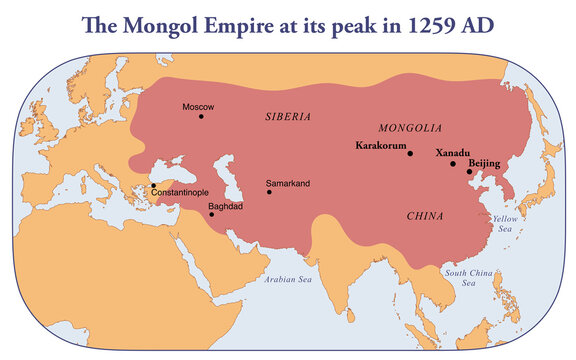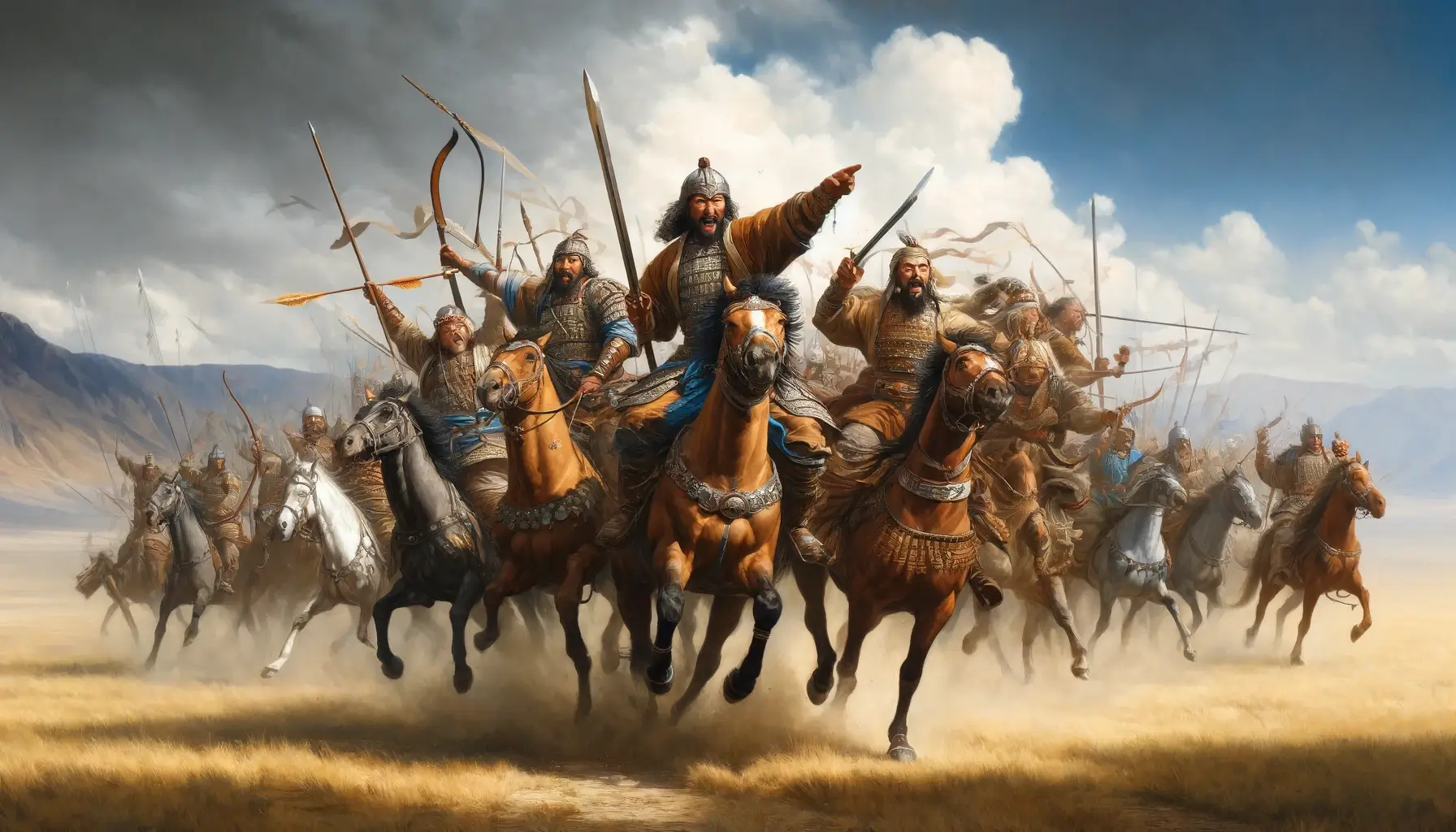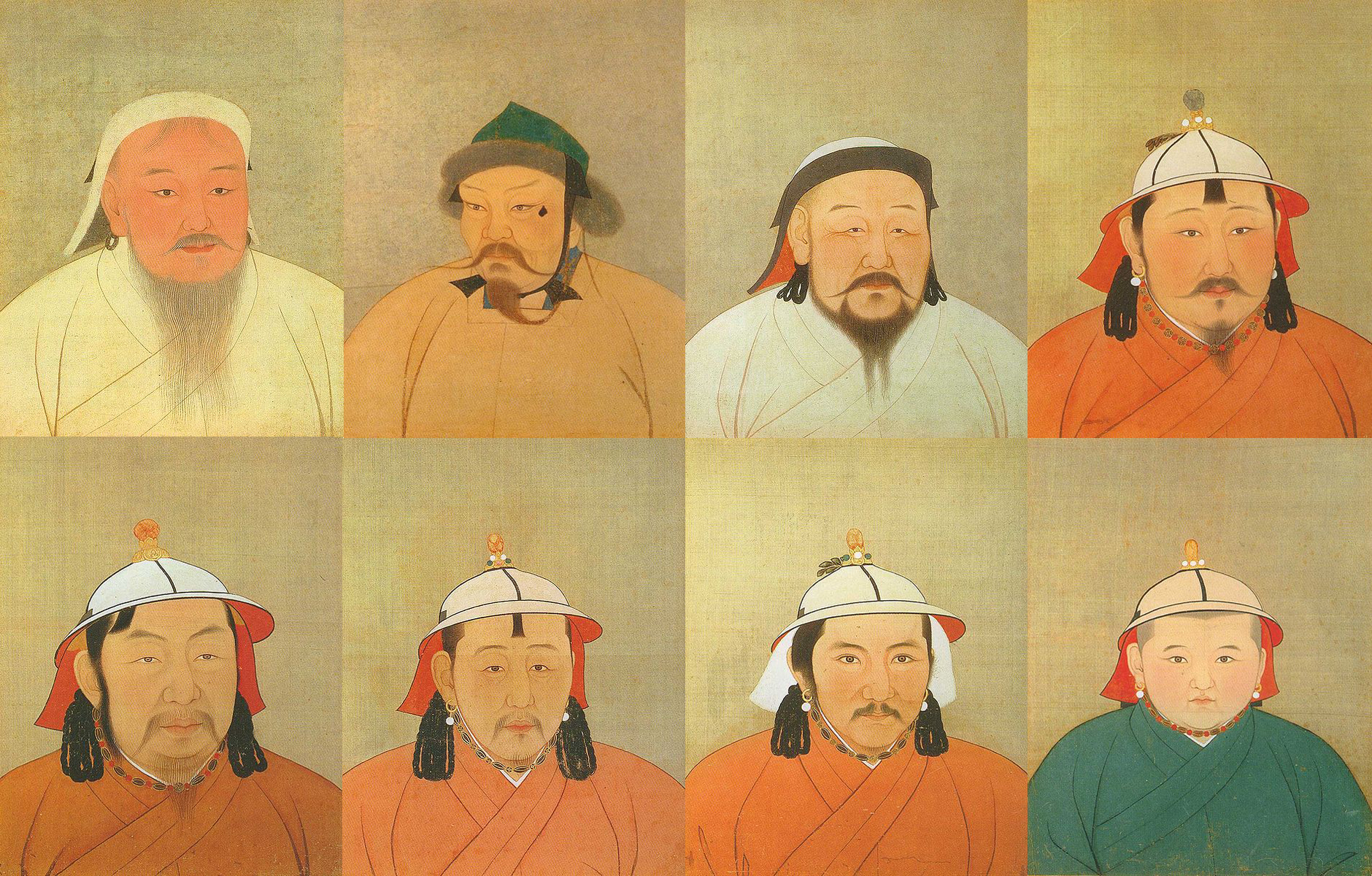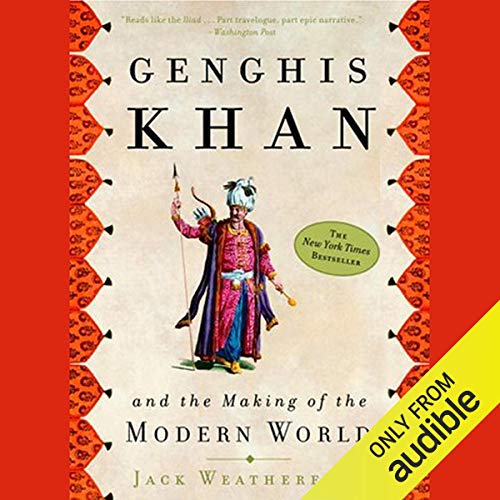The Mongols were a group of nomadic warriors who established a vast empire in the 13th and 14th centuries. Led by Genghis Khan, they were able to conquer much of Asia, Europe, and the Middle East, making them one of the most successful and feared military forces in history. They were known for their superior cavalry and their ability to adapt to different terrains, which allowed them to quickly expand their territory. The Mongols were also skilled diplomats and were able to maintain control over their conquered lands through a combination of military force and effective governance. Their empire eventually stretched from present-day Russia and China to parts of Europe and the Middle East, making it one of the largest and most diverse empires in history.

Interesting facts about Mongols
- Genghis Khan’s conquests were so extensive that they may have reduced the world’s population by as much as 11% at the time.
- His direct descendants are so numerous that genetic studies suggest that about 0.5% of the world’s male population may carry his genetic marker.
- The first hand description of Chengis Khan by his contemprary persian historian Rachid Al-Din also indicates him as a pale skinned caucasian not a mongolian.
- Mongolians were caucasian
1) Use of technology
2) Speed
3) Organisation, tactics and strategy
Genghis Khan’s mother, Hoelun, was abducted by the Merkit tribe when he was a child. The Merkits were a rival tribe that had long been in conflict with the Kiyads, and they took Hoelun as a way to try to assert their dominance over the Kiyads. This event had a significant impact on Genghis Khan’s life, as it motivated him to seek revenge against the Merkits and to eventually unite the Mongol tribes under his leadership.
Genghis Khan’s wife, Börte, was also abducted by a rival tribe when she was a young woman. She was taken by the Merkits, the same tribe that had kidnapped Genghis Khan’s mother, and was held captive for several months before being rescued by Genghis Khan and his allies. The abduction of Börte played a key role in Genghis Khan’s rise to power, as it led him to form alliances with other Mongol tribes in order to rescue her and defeat the Merkits. These alliances were instrumental in his eventual victory over the rival tribes and his establishment as the leader of the Mongols.
Why were Mongols so successful?
Technology:
The Mongols were known for their advanced military tactics and technology, which allowed them to conquer much of Asia, Europe, and the Middle East in the 13th and 14th centuries. One of the keys to their success was their superior cavalry, which was made up of skilled riders who were trained to shoot arrows from horseback with great accuracy. The Mongols were also masters of psychological warfare, using a range of tactics to intimidate and demoralize their enemies. They were known for their terrifying battle cries and their use of flags and banners, which were designed to intimidate their opponents. In addition, the Mongols were skilled at adapting to different terrains and climates, which allowed them to succeed in a wide range of environments. All of these factors contributed to the Mongols’ military dominance and their ability to expand their empire.
Speed:
The Mongols were known for their speed and mobility on the battlefield, which gave them a significant advantage over their enemies. They were able to cover vast distances quickly due to their superior horses, which were bred for endurance and speed. The Mongols also trained extensively in different tactics, including ambushes, encirclements, and feigned retreats, which allowed them to adapt to different situations and outmaneuver their opponents. This extensive training, combined with their skill at using the terrain to their advantage, allowed the Mongols to launch surprise attacks and catch their enemies off guard. In addition, the Mongols were known for their use of scouts, who were trained to gather intelligence about their enemies and the terrain, which helped them to make informed decisions on the battlefield. All of these factors contributed to the Mongols’ military success and their ability to conquer vast territories.

The Mongols were known for their superior organization, tactics, and strategy, which helped them to become one of the most successful military forces in history. One of the key factors in their success was their discipline, which was maintained through strict rules and harsh punishments. For example, the Mongols had a rule that if one member of a unit retreated, the rest of the unit would be executed. This helped to ensure that the Mongols remained united and disciplined on the battlefield.
In addition to discipline, the Mongols were known for their use of scouts, spies, and agents to gather intelligence about their enemies and the terrain. They also used agents to spread rumors about the size and strength of their army, which helped to intimidate their opponents. At the same time, the Mongols gave their soldiers a degree of freedom in battle, allowing them to use their own initiative and take advantage of opportunities as they arose.
The Mongols were also known for their fairness, ensuring that the spoils of war were distributed equally among the soldiers. They were also merit-based, rather than being based on family connections or other forms of nepotism. Genghis Khan broke up the traditional Mongol tribes and distributed their members among different battalions, which helped to create a sense of unity and purpose among the soldiers. The Mongols were also skilled at communication, using a system of signaling and messengers to keep their soldiers informed and coordinated on the battlefield.
The Mongols were a meritocracy, meaning that they were based on individual merit rather than family connections or other forms of nepotism. This meant that people were judged on their own abilities and accomplishments, rather than their social status or heritage. This system had a number of benefits, as it allowed talented individuals to rise through the ranks based on their own merit, rather than being held back by their social status or lack of connections.
Before the Mongols established their meritocracy, the Mongol tribes were organized along tribal lines, with each tribe being led by a chieftain who inherited his position from his ancestors. This system often led to conflicts between the tribes, as they competed for resources and power. By breaking up the tribes and establishing a meritocracy, Genghis Khan was able to create a more unified and cohesive army, which was better able to work together and achieve its goals. This helped to make the Mongols a more successful military force and contributed to their ability to conquer vast territories.
The Mongols were known for their highly effective military tactics, which allowed them to conquer much of Asia, Europe, and the Middle East in the 13th and 14th centuries. One of the key elements of their success was their use of heavy cavalry, which was supported by light cavalry. The Mongols would first send in their light cavalry to shoot arrows at the enemy from a distance, while the heavy cavalry remained in reserve. When the enemy was weakened, the heavy cavalry would then charge in and engage in close combat, while the light cavalry moved around the flanks to surround the enemy.
In order to coordinate their movements, the Mongols used a system of signaling with black and white banners, which allowed them to communicate silently across long distances. The light cavalry would go forward and shoot arrows from a distance, while the heavy cavalry remained in reserve. When the enemy was weakened, the heavy cavalry would charge in and engage in close combat, while the light cavalry moved around the flanks to surround the enemy.
However, the Mongols did not always completely surround their enemies, leaving a pathway for them to retreat. This was done intentionally, as the Mongols believed that it was better to let their enemies retreat and regroup, rather than destroying them completely. This allowed the Mongols to preserve their own resources and avoid unnecessary casualties.
In addition to these tactics, the Mongols were known for their use of psychological warfare, using a range of tactics to intimidate and demoralize their enemies. They would put felt on their horses to make them look larger and more intimidating, and they would use prisoners as human shields or dress them up as Mongol warriors to confuse and deceive their enemies. These tactics, combined with their superior organization and discipline, helped the Mongols to become one of the most successful military forces in history.
Learn More
I really recommend this book about Genghis Khan, which you can get the Book, Ebook or Audiobook on Amazon here.
It’s interesting to learn about Genghis Khan’s brutal upbringing and how that trigged an insatiable drive in him to conquer the world


Pingback: Fatherlessness & Extreme Ambition - Richard Coward